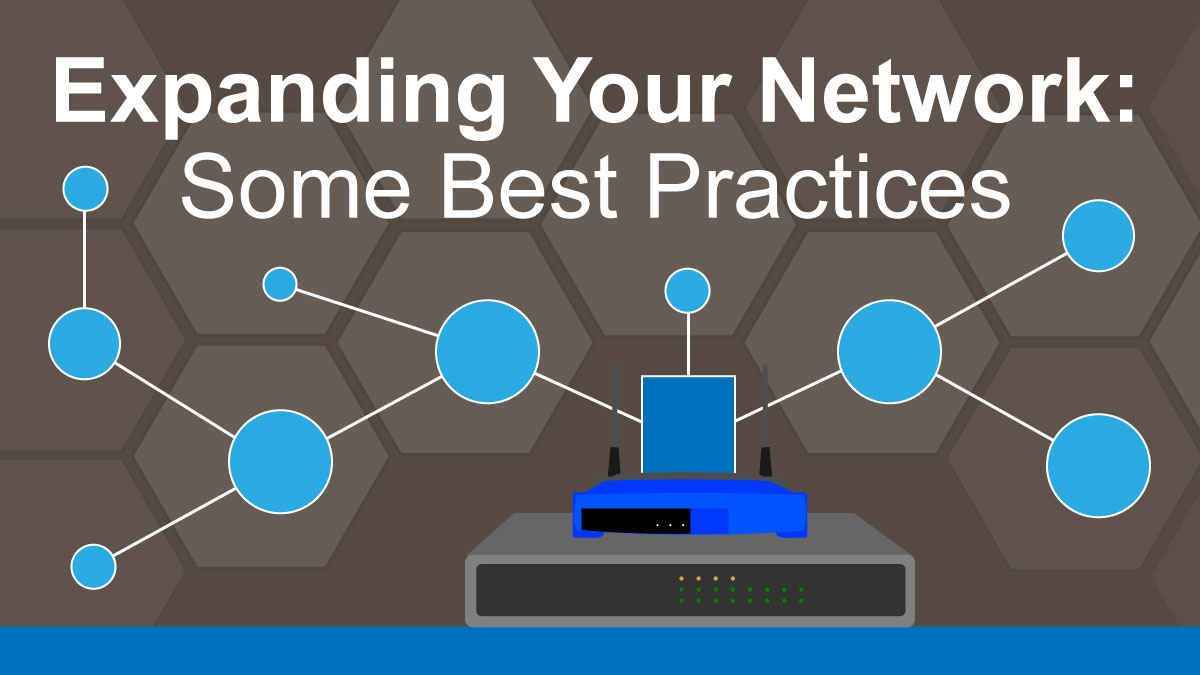Expanding your office network can be as simple as adding on another network switch or hub, but as business networks grow and become more complex, it pays to follow some best practice procedures to ensure that you network remains fast, secure, and manageable. Here are 6 tips to stay on top:
Monitor Your Network Performance
You don’t know where your bottlenecks are if you don’t monitor performance. Many switches come with management interfaces of some kind, and you can also use the built-in network tools of your operating system to see what’s going on too. This can give you a good indication of where you weak points are, and where you need to scale your network and appliances.
Plan & Budget for Growth
Assuming that your IT infrastructure is going to stay at roughly the same size as you grow is a recipe for a slow network. As your business grows, so will your number of computers and other devices, and therefore, your network must also grow too. Ensure that you build in a budgetary figure for additional cabling and network appliances; that way, you won’t be compromised when you need add more PCs, POS systems, or printers to your office.
Maintain a High Quality of Network Security
Network security doesn’t just mean running firewalls and anti-virus software. There’s more to it than that; you need to:
- Keep all of your software up-to-date
- Keep the firm-and-middle-ware of your networked devices up-to-date
- Ensure all of your staff are well-educated in what to browse, and what not too, and what emails to avoid
For more information, see these related posts:
- Security Systems for Beginners
- Network Security Best Practices
- Desktop Security Best Practices
- Internet Security Best Practices
- Remote Workforce Security Best Practices
Segment Larger Networks
As company networks get larger, the traffic overhead on the hubs and switches gets greater, and this can slow down the overall network. For large, busy networks, it’s a good idea to separate your network into two-or-more segments, each linked by a bridge or router. This helps keep traffic local to each relative segment, rather than being broadcast to the whole network.
This has the secondary benefit of building in a security redundancy, for instance, if a computer on one segment picks up a virus, you know that it can only spread within that particular segment, allowing you to isolate and remove the infection easier, and minimizing your clean up.
Use Quality Equipment and Services for Your Network
Don’t skimp on quality. Always buy the best that you can afford. And this doesn’t just mean network devices – routers, hubs, switches, firewalls, etc., but also cabling, connectors, and services. Entry-level equipment may be cheap initially, but you may end up paying more in the future to replace it.
Consider All Types of Technology
When planning your network, don’t forget that you can reduce hardware expenditure but utilizing virtualization software and techniques to create virtual servers. segments, and workspaces. Virtualization also provides built-in monitoring, analytics, and management tools too, making it easy to adjust virtual devices on-the-fly.
And don’t forget about cloud services. Cloud services can simplify your software architecture by ;providing managed services to your client computers from a cloud service provider, minimizing the impact upon your own servers and systems. more about cloud services here.
When considering upgrades, growth strategies, new technology, and infrastructure expansion, always do your research, look for proof-of-concepts, and read client testimonials; you don’t want to buy in to a system that isn’t going to work for you.
And if in doubt, contact TechPoint for advice and assistance.

